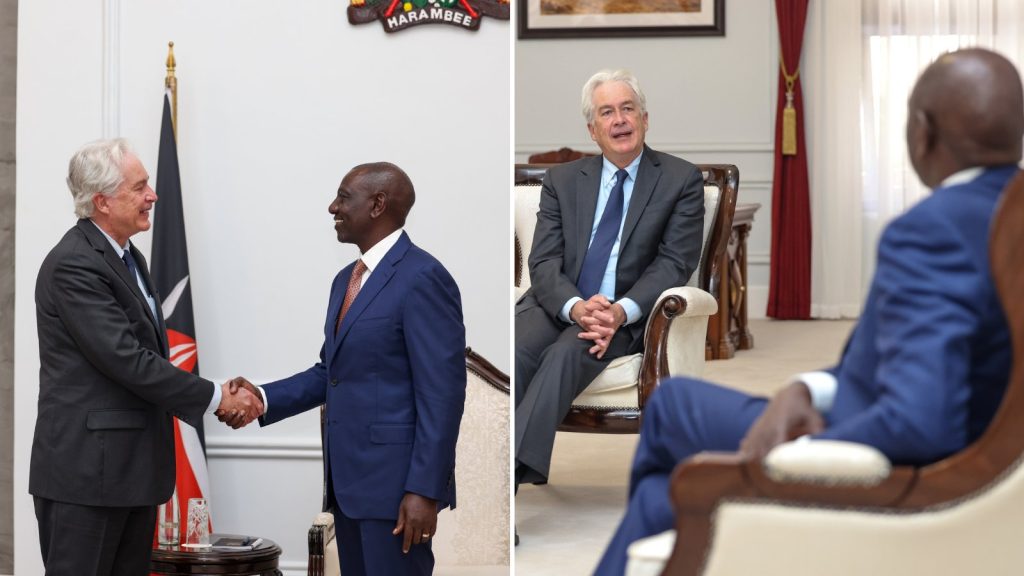In a notable series of visits, the heads of both the CIA and MI6 have traveled to East Africa, raising speculation on pressing security concerns across the region. CIA Director William Burns visited Kenya on October 28, where he held discussions with Kenyan President William Ruto and the country’s intelligence chief, Noordin Haji. Burns then continued his tour in Somalia on October 29, meeting with Somali President Hassan Sheikh Mohamud and Abdullahi Sanbalolshe, Director of the National Intelligence and Security Agency (NISA). This marks Burns’ second visit to Mogadishu within a year, following a similar trip in January 2024, where he met with President Mohamud and former NISA Director Mahad Salad.
The series of visits aligns with heightened regional tensions, particularly concerning Yemen. Just days prior to these meetings, MI6 Director Richard Moore was in Kenya, continuing on to Ethiopia. While in Addis Ababa, he notably did not directly recieved by Ethiopian Prime Minister Abiy Ahmed but recieved by deputy prime minister, a decision Ethiopian media interpreted as a possible diplomatic shift. During his visit, discussions reportedly centered on Red Sea security, signaling coordinated efforts between the US and UK on regional security issues.
With Kenya viewed as an “island of stability” in East Africa and its proximity to the Arabian Peninsula, Burns’ visit has drawn attention to potential discussions on Yemen, where the Houthi rebel movement recently vowed to blockade shipments bound for Israel in response to the escalating Palestine-Israel conflict. Following this declaration, the US and UK launched operations in Yemen, sparking new concerns over regional spillover.

Another topic likely discussed was Kenya’s upcoming police deployment to Haiti, supported by $200 million from the US. This move has been met with resistance both in Kenya and Haiti, as well as legal challenges in Kenyan courts. Observers have questioned whether the deployment aligns with US strategic interests, viewing Kenya’s involvement as a possible proxy action.
The back-to-back presence of top Western intelligence chiefs underscores an urgent focus on regional stability and security, suggesting a renewed alignment with local governments. Meanwhile, Kenya and Somalia appear to be emerging as key players in East African security, with an eye toward supporting broader international agendas on both regional and global stages.



